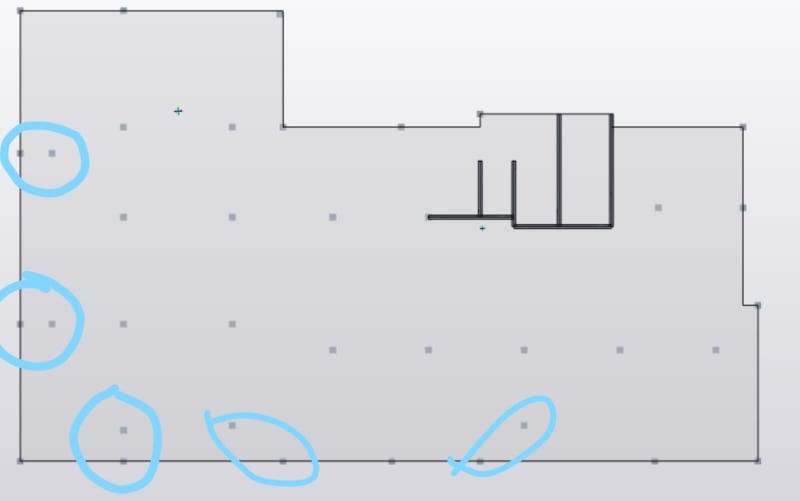Hi everyone
I am really stuck with the design of a 350 mm thick flat slab (no column drops). The structure is a podium supporting five floors above. As the structure has an irregular column layout, line loads and point loads located in random areas I intend to design it with FEM. I previously did some design of a flat slab but with a regular column layout using FEM. I then used the column/middle panel strip method to average peak moments over the columns so I could specify the reinforcement. In this case however I just don’t know how to apply the strip method due to the irregularity of the column layout as I don’t know how to define a panel width. Maybe you guys know some other method?
By the way I am using Tekla Structural Designer software and below there is a plan view of the podium.
I am really stuck with the design of a 350 mm thick flat slab (no column drops). The structure is a podium supporting five floors above. As the structure has an irregular column layout, line loads and point loads located in random areas I intend to design it with FEM. I previously did some design of a flat slab but with a regular column layout using FEM. I then used the column/middle panel strip method to average peak moments over the columns so I could specify the reinforcement. In this case however I just don’t know how to apply the strip method due to the irregularity of the column layout as I don’t know how to define a panel width. Maybe you guys know some other method?
By the way I am using Tekla Structural Designer software and below there is a plan view of the podium.

